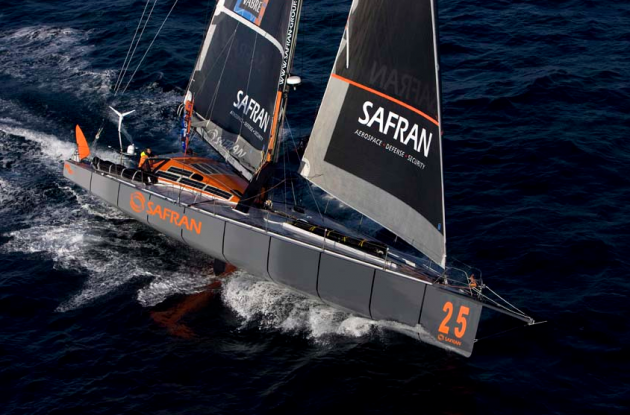Traffic lane abuse
Ocean yachtsman Marc Guillemot, skipper of the French racing yacht Safran, was fined £9,381 and made to pay costs of £4,125 for travelling the wrong way in busy traffic lanes off the Kent coast.
On 6 June 2012 the Safran left Lizard Point in Cornwall, in an attempt to beat its own previous record set in 2011 for the fastest sail around the United Kingdom and Ireland.
At 11.43pm on 6 June, the Safran was seen by Dover Coastguard travelling in a North Easterly direction in the South West lane of the Dover Strait Traffic Separation Scheme ( TSS). On the 7 June at 4am, the yacht failed to proceed in the appropriate traffic lane in the Sunk traffic separation scheme.
During its passage, several merchant ships altered course to avoid a collision with the yacht. Dover Coastguard made a number of attempts to contact the yacht with no response. Eventually the French Coastguard got in touch and pointed out that the vessel was travelling the wrong way in the TSS. Guillemot replied saying he was trying to break the record for sailing around the UK and Ireland and would not alter course.
In total, the Safran travelled 28 nautical miles in the wrong direction in both separation schemes. This was in breach of Rule 10(b)(i) of the Convention on the International Regulations for Preventing Collisions at Sea 1972.
In passing sentence the Chairman of the Southampton Magistrates, Mr. John Johnson said:
“We have heard this afternoon that Mr. Guillemot is an experienced and confident yachtsman. However, Mr. Guillemot did travel the wrong way in the shipping lanes. For the offence on the 6 June, we fine you £13,000 reduced by your early guilty plea to £8,700. For the offence on the 7 June, we fine you £1,000 reduced to £666, once again for your early guilty plea.”
Kaimes Beasley, Channel Navigation Information Service Manager at Dover Coastguard, stated: “The Strait of Dover Traffic Separation Scheme is one of the busiest in the world. Mr Guillemot was reckless in his navigation during the hours of darkness not only in the Dover Strait TSS, but also in the Sunk Traffic Separation Scheme. He put his crew and other vessels at significant risk in order to try to beat his previous record.”




